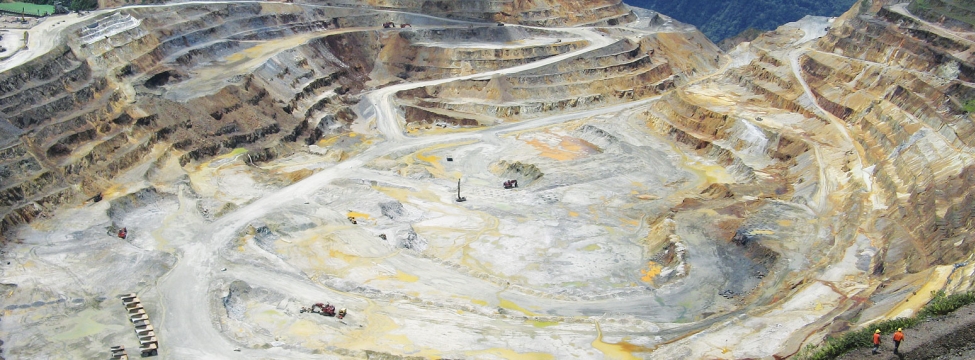To serve you better, our new website displays information specific to your location.
Please visit the site and bookmark it for future use.
Numerical analyses for evaluating pit wall and underground stability at Ok Tedi
A staged numerical analysis program was conducted for the final pit and proposed underground mining excavations at Ok Tedi Mine in Papua, New Guinea. The analyses were conducted to evaluate the performance of the final east and west pit walls, and the stability of the underground mining excavations beneath these walls, as mining progresses. These evaluations were intended to facilitate the design and to assist with decision-making concerning the viability of the underground mining project.
The mine is situated in a complex geological setting including faulted and highly altered rock in an area that is seismically active and that is subject to very high rainfall. Detailed geotechnical characterisation and hydrogeological modelling was therefore carried out to provide accurate input for the numerical analyses.
The numerical analyses were performed while the most suitable mining methods were still being assessed, and therefore the analysis had to be flexible in method and application. The initial method selected was two-dimensional distinct element analysis using UDEC software for evaluating pit wall stability throughout the underground mining sequences. However, it became evident that certain mining geometries were not amenable to satisfactory analysis in two dimensions. Therefore, SRK performed three-dimensional finite difference analyses using FLAC3D to investigate pit wall and rock mass stability and the effectiveness of prospective stabilisation measures. In addition, SRK performed boundary element modelling to rapidly assess the likely extent and magnitude of stress concentrations within the rock mass.
An Open Benching mining method was originally considered, with the remainder of the ore then to be mined out by these underground methods: Sub Level Caving beneath the east and southwest pit walls, and Block Caving beneath the central west pit wall. Subsequent to the first phase of numerical analyses, it was decided that only underground mining methods would be used.
Conclusions were reached concerning the risk and scale of slope failure resulting from the underground / pit wall stress interactions. SRK assessed measures to mitigate the failure of slopes and underground excavations, including using rock-fill to minimise underground voids, and leaving stabilising pillars within the orebody.
Ian de Bruyn: idebruyn@srk.com.au
|
You can download a PDF of the entire |
PDF
A4 |
PDF
Letter |
|
|
|
Our newsletters focus on specific areas of interest to earth resource professionals and clients. Each is available as an Adobe Acrobat PDF file. If you don't already have Adobe's PDF reader, you can download it free.
![]()


